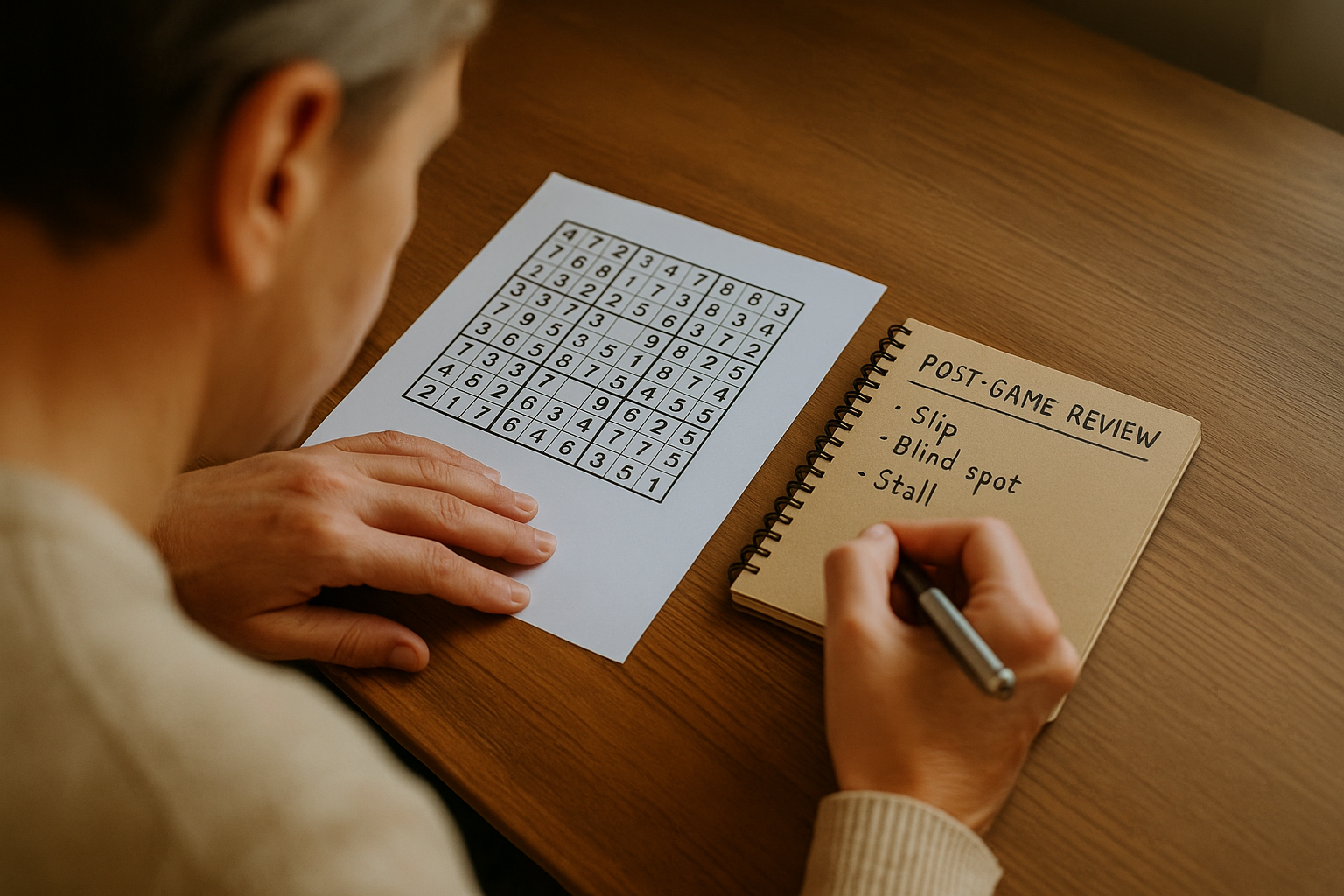
Coach Yourself: Post-Game Reviews That Compound Skill
For years I solved, closed the tab, and moved on. My plateau broke when I added a five-minute review after each game. The results: fewer repeats of the same mistake, faster recognition of patterns, and a calmer mindset for the next puzzle.
Promise of this guide: you’ll get a blunder taxonomy, a review template you can keep under five minutes, and a simple stall map to prioritize practice.
To test the loop today, start a new session online sudoku and keep notes as you go.
The Blunder Taxonomy
Slip
Execution error (mis-click, mis-copy).
Prevention: slower confirmation on the final digit in a unit.Blind spot
Missed pattern you “know” (e.g., box–line).
Prevention: structured scan order.Strategy gap
Technique not in your toolkit yet (e.g., XY-Wing).
Prevention: pattern-of-the-week focus.Tunnel vision
Over-investing in one area.
Prevention: rotate units every 60–90 seconds.
The 5-Minute Review Template
- 00:00–01:00 — Timeline: note one turning point (where the puzzle opened up)
- 01:00–02:00 — Errors: classify any mistake by the taxonomy above
- 02:00–03:00 — Stalls: mark each stall >60s and what broke it
- 03:00–04:00 — Patterns: list techniques used; circle one to train next session
- 04:00–05:00 — One commitment: a single change you’ll test tomorrow
Build a Stall Map
Print (or imagine) a 9×9 with three colors: early/mid/late. Shade where stalls cluster. Most players find one or two recurring “hot zones.” That’s your next training target.
Micro-Drill: After-Action in Motion
Right after your next solve, take exactly five minutes to fill the template above.
Then reopen a board and, in the first three minutes, apply your one commitment. Keep the loop tight.
On your stats view, watch stalls and mistake types shift over a week.
Reflective Questions
- Which mistake costs you the most time: slips, blind spots, or strategy gaps?
- Do your stalls cluster in boxes with heavy notes—suggesting decluttering?
- Are you tracking one change per day, or trying five and proving none?
- What does your turning point usually look like—singles, structure, or pattern?
Brain & Attention Note
Short reviews reinforce learning while the memory trace is fresh, improving recall of the next similar position. Think of it as spaced repetition for situations, not facts.
Methodology & Workflow
- Session logs: stall counts, error tags, and time-to-turning-point
- Weekly summaries: track a single behavioral change
- Limitations: self-report bias and puzzle difficulty variance
Summary & Call to Action
Don’t let effort evaporate when you hit “finish.” Review, tag, and turn insight into tomorrow’s plan.
👉 Ready to compound your skill? Play a Sudoku puzzle now, run the five-minute review, and commit to one change for the next session.

 German
German
 Japanese
Japanese
 Arabic
Arabic
 Spanish
Spanish
 French
French
 Russian
Russian
